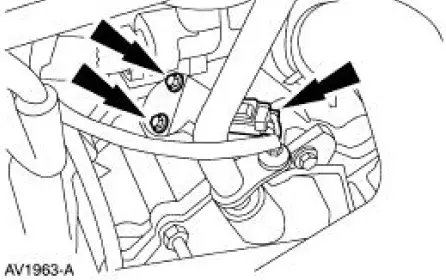Ford Mustang (1999-2004) Service Manual: Camshaft Position (CMP) Sensor - 3.8L
Removal
1. Disconnect the battery ground cable. For additional information, refer to Section.
2. Remove the camshaft position (CMP) sensor.
- Disconnect the connector.
- Remove the bolts and the sensor.

Installation
1. To install, reverse the removal procedure.
 Temperature and Manifold Absolute Pressure (T-MAP)
Sensor - Cobra
Temperature and Manifold Absolute Pressure (T-MAP)
Sensor - Cobra
Removal and Installation
1. Disconnect the temperature manifold absolute pressure (T-MAP)
sensor electrical connector.
2. Remove the bolts and the T-MAP sensor.
3. To install, reverse the rem ...
 Camshaft Position (CMP) Sensor - 4.6L
Camshaft Position (CMP) Sensor - 4.6L
Removal and Installation
1. Disconnect the battery ground cable. For additional information,
refer to Section.
2. Remove the bolts and position aside the power steering pump
reservoir.
3. ...
Other materials:
Principles of Operation
Battery Saver
The battery saver feature provides automatic shut-off of power to demand
and courtesy lamp circuitry.
When the generic electronic module (GEM) detects the ignition switch
circuits are in the key OFF or
removed ignition key positions, powe ...
Manual Control Lever Shaft and Seal
Special Tool(s)
Installer, Shift Shaft Fluid Seal
307-050 (T74P-77498-A)
Alignment Gauge, TR Sensor
307-351 (T97L-70010-A)
Removal
1. Drain the transmission fluid and remove the fluid pan and filter. For
additional information, ...
HomeLink® wireless control system
WARNING: Make sure that the garage door and security device
are free from obstruction when you are programming. Do not
program the system with the vehicle in the garage.
WARNING: Do not use the system with any garage door opener
that does not have the safety s ...
